In Chicago’s Back of the Yards, a new generation of immigrants fights the old turf wars, with deadlier weapons
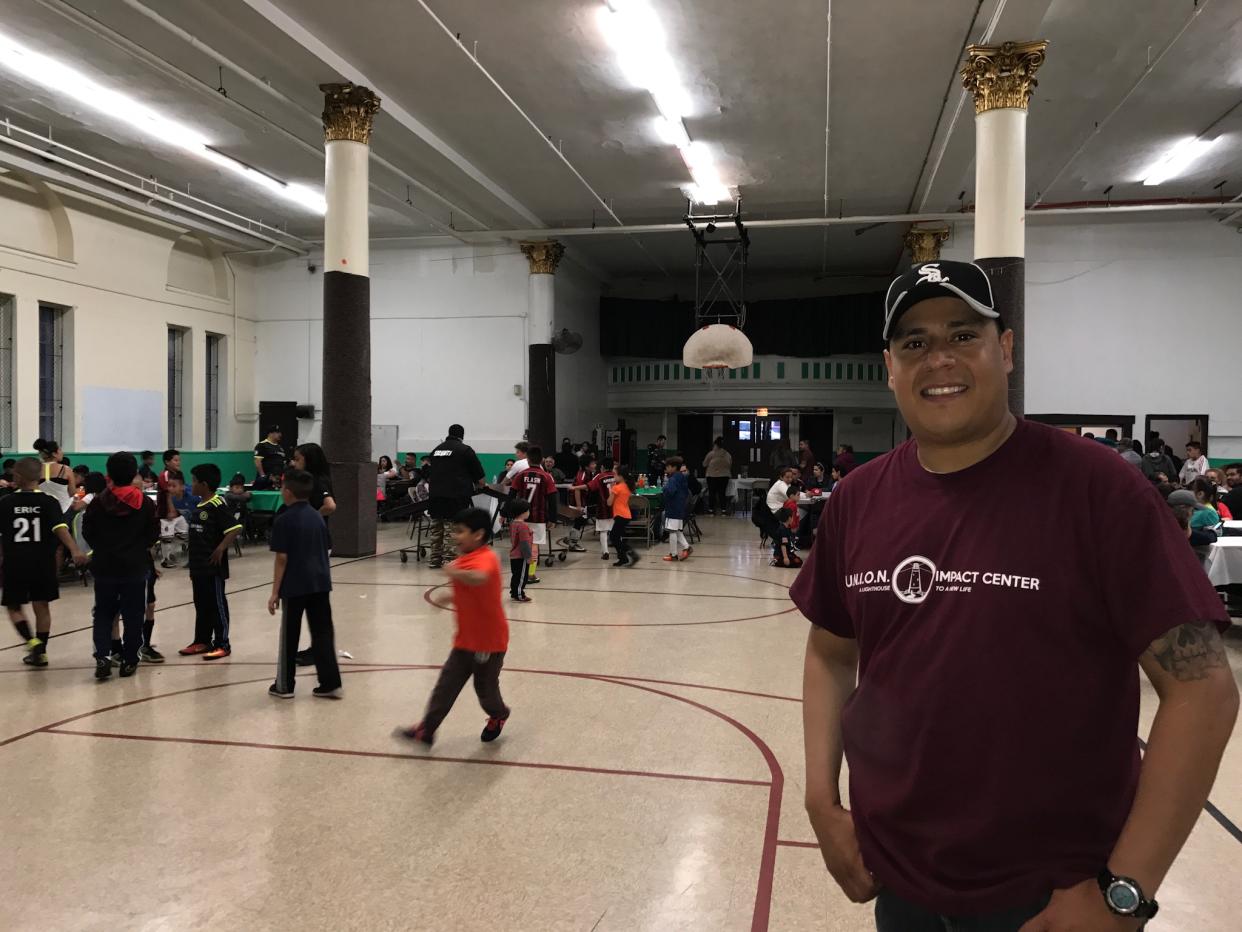
CHICAGO — On a recent Friday afternoon, the aroma of birria, a spicy Mexican stew, filled the basement of St. Joseph’s Catholic Church in Chicago’s Back of the Yards neighborhood. The entrance of this historic red brick church, founded by Polish immigrants in 1887, now bears signs in English and Spanish. Downstairs, two men in matching maroon T-shirts chatted in Spanish as they set up rows of long folding tables and chairs between columns whose gilded moldings were the only hint of the opulent cathedral above them. A trio of black-clad security guards assumed their posts near the exits, as a DJ tested the sound system, blasting Shakira through the speakers.
“When I came over here, this neighborhood was Polish, some Irish, a few Mexicans,” said Alfonso Garcia, who moved to Back of the Yards with his family in 1971. “Back then, we heard the sound of rock ‘n’ roll. Now it’s all, you know, Mexican music, Hispanic music.”
A Mexican-born U.S. citizen who spent 35 years working as a butcher in Chicago’s mostly bygone meatpacking industry, Garcia now heads the youth soccer program for the Union Impact coalition — a local organization that aims to keep kids off the streets and give them the structure, support and motivation needed to resist the pull of gang life.
“That’s what a kid really needs — somebody to look after them,” said Garcia. He and the others were at the church setting up for a party to celebrate the end of the winter soccer season with trophies and awards. About 80 families, close to 400 people, were expected to show up.
St. Joseph’s church symbolizes how the neighborhood has changed — and how it hasn’t — since long before Garcia and his family arrived.
Once it was home to a diverse population of European immigrants, like those immortalized by Upton Sinclair in “The Jungle,” who had come from Ireland and throughout Central and Eastern Europe in search of work in the city’s meatpacking industry. But those communities began disappearing after the stockyards closed in 1971, making way for a new wave of Hispanic immigrants like Garcia and his family, also seeking a better life on Chicago’s Southwest Side.
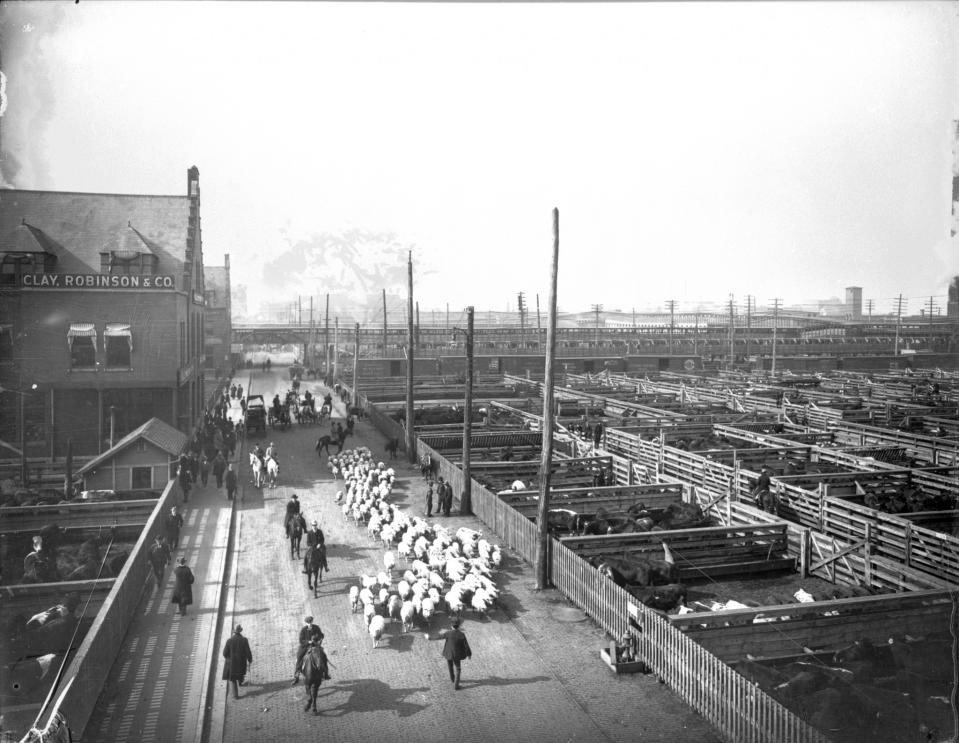
Life in Back of the Yards is better in some ways — the putrid smell of the stockyards no longer fills the air — but worse in others, as a deadly gang war, abetted by high-powered assault rifles and social media, has residents under siege.
Driving through the densely populated community hardly evokes a sense of danger. Along the main drags of 47th and Ashland, a collection of pawnshops and dollar stores offer evidence of the lack of economic opportunity in the area since the stockyards closed. And though the two- and three-story wood-framed houses that line the leafy, one-way residential streets have seen better days, Back of the Yards on its surface looks more like a typical working-class community — with plenty of schools, playgrounds and public parks — than an “inner-city” war zone.
Yet it is the setting of a decades-old gang rivalry that last year made the neighborhood home to one of the deadliest blocks in Chicago. And as of May 2, the Chicago Tribune had recorded 26 shooting victims this year in the neighborhood, also known as New City. By that night, the list had grown by at least two after a car of reported La Raza gangsters fired an assault rifle at two plainclothes police officers whom they’d apparently mistaken for members of the Almighty Saints, their longtime rivals. Both officers survived the shooting and were treated for non-life-threatening injuries at Stroger Hospital, which reportedly receives about 900 shooting victims each year.
“This rivalry goes back more than half a century,” said John Hagedorn, a professor of criminology at the University of Illinois at Chicago and an expert on the city’s gangs. When they first formed back in the early 1960s, the Saints were made up of mostly Polish youths from the neighborhoods, while La Raza has been Hispanic from the start. The two gangs’ territories met at the neighborhood’s central intersection, 47th and Ashland.
Hagedorn said that although La Raza has expanded over the years — developing close ties with the Sinaloa drug cartel and earning a reputation for infiltrating law enforcement and corrupting politicians — the Almighty Saints have remained in the same place they started: defending their turf fiercely. To the death, even.
Unlike the gang violence in other cities, or even other parts of Chicago, the drug trade doesn’t play a large role in the killings in Back of the Yards.
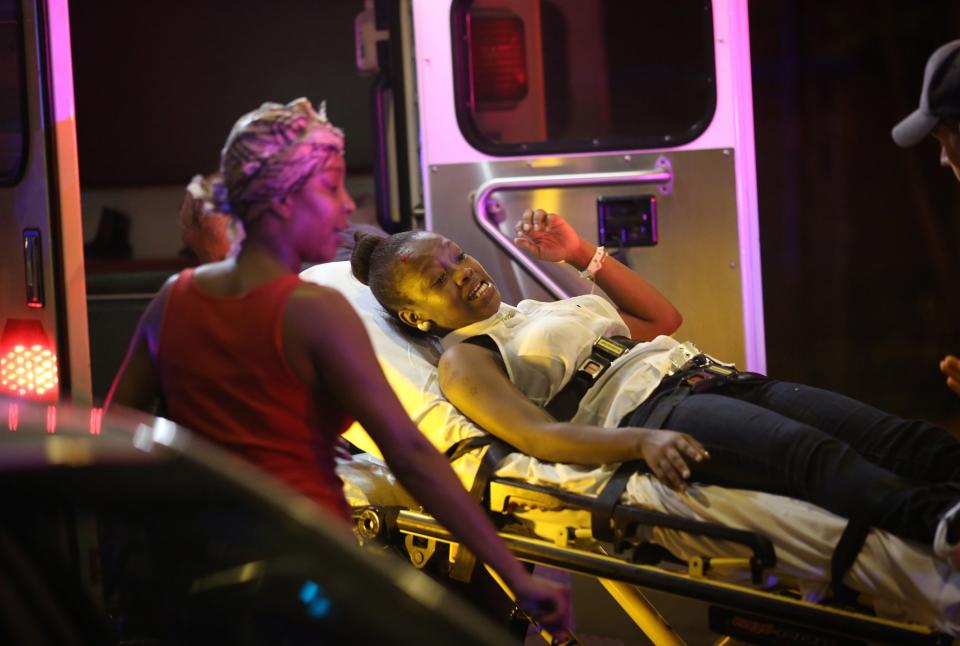
“The Saints are much more of a classic neighborhood kind of gang,” Hagedorn said, noting that the extent of the Saints’ involvement in drug sales is likely limited to the corners they’ve historically controlled. “Forty-seventh to 43rd, that’s their area, and it’s been their area, and no one’s going to get into it.”
“Because the Saints started out as a Polish gang, it’s possible that tensions between its members and the neighboring La Raza gang were racial in origin,” Hagedorn suggested. But as the demographics of the area changed, so too did the face of the Almighty Saints.
Even though both gangs are now “majority Mexican,” said Hagedorn, their rivalry is “more deadly than ever,” with longstanding alliances solidified along geographic lines, corresponding to the old ethnic boundaries. Gang membership doesn’t reflect religious differences or preexisting antagonisms imported from Mexico; teenagers live or die depending on what street their family happened to settle on in Chicago.
“This is, in my opinion, where segregation was invented,” said Raphael Yañez, who founded the Union Impact Center in 2007.
Well before Back of the Yards was even considered a part of the city of Chicago, the various immigrant groups that came here in search of work divided the neighborhood among themselves, creating separate territories centered around churches led by priests from their home country.
“At one side of the community, a church was built by the Irish,” said Yañez. “In the middle, where we are doing our celebration, was built by Polish. You walk three blocks west, [the church] was built by Bohemians from the Czech Republic, three blocks north, a church built by Lithuanians … a few blocks east, Germans.”
Now, Yañez said, “the same places where those churches were built are different gangs.”
Yañez, a longtime Back of the Yards resident and Chicago police officer specializing in crime prevention, emphasized that the object of the soccer program is not only to keep kids off the streets, but also to get them to see past the invisible lines that have divided the neighborhood for so long.

“It’s just an instrument,” Yañez said of the soccer program. “We’re basically using that to dig deeper,” setting up teams so that kids who would otherwise be deadly rivals — for no other reason than the side of the street their house is on — are forced to play on the same team.
While other, more notoriously dangerous neighborhoods like Austin — where 130 people have been the victims of shootings so far this year — saw overall violent crime decrease last month, violent crime in Back of the Yards was up 10 percent from a year earlier.
Recent shootings, including the police shooting, are part of an escalating cycle of retaliatory attacks involving rival gang members armed with high-powered, semiautomatic assault rifles. In February, the Tribune reported that there had been 33 shootings involving semiautomatic rifles in Back of the Yards and neighboring Brighton Park in the previous nine months — a disturbing development that, at least for now, has remained confined to those two neighborhoods, according to police.
Craig Chico, executive director of the Back of the Yards Neighborhood Council, compares the neighborhood’s gun-wielding gangbangers to terrorists, arguing that the number of young people actively involved is far smaller than the recent shootings would suggest.
“It’s such a small percentage of the kids in this population that will actually pick up a gun and shoot,” he said. “But it’s like the classic definition of terrorism. All it takes is a few people to present the perception … like the entire neighborhood is under siege. It’s just that horrible feeling, but it’s not reality.”
Like the council he now leads, which is one of the oldest functioning community organizations in the country, Chico said his family “has deep roots in the Back of the Yards community.”
“My grandfather came here from Mexico circa 1910, 1915 … and my family has owned a few different businesses in Back of the Yards over the years,” he said. “So for most of my childhood, I was here every day with my grandmother.”
In the wake of the Great Depression, legendary community organizer Saul Alinsky co-founded the BYNC in 1939, successfully rallying residents from various ethnic enclaves to put their differences aside and unite behind common causes like better wages and improved working and living conditions. This created a foundation of community leadership and connectedness that enabled Back of the Yards successfully “un-slum” in the 1960s — making it a model for other cities and neighborhoods that had been hit hard by the Depression.
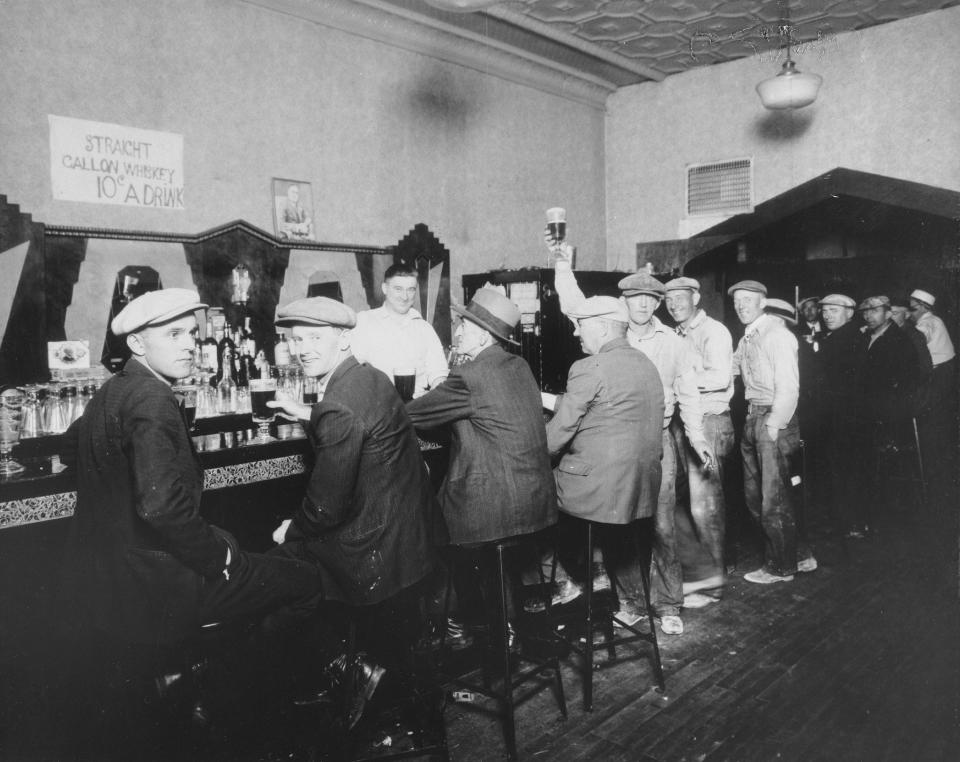
Historically, the BYNC’s primary focus has been economic development, though it offers some social programs as well. Recently, though, the challenge of reducing neighborhood violence has made its way to the top of the group’s agenda.
“We seem to not be able to get a handle on it right now,” said Chico. “I don’t know that it’s unique to us, but it certainly seems to be a little more extreme in our area right now.”
Of course, Chico said, violence in Back of the Yards is hardly a new phenomenon.
“My grandfather had a scar from his eye to his ear because somebody got him with a switchblade in the bar when he was fundraising to build the church called the Immaculate Heart,” he said. Alfonso Garcia also recalled fights and even riots erupting among students when he was in high school in the 1970s, but said that those conflicts largely sprang from racial tensions.
But, as Chico sees it, the violence today is more flagrant than ever, and made all the more dangerous by the use of assault rifles. He points to the shooting last summer that left 21-year-old Salvador Suarez dead following Sunday Mass at the Holy Cross Immaculate Heart of Mary Church — the same church for which Chico’s grandfather had been raising funds when his face was cut.
“Twenty years ago, even 15, 10 years ago, you wouldn’t hear about someone so brazen as to do something like that,” he said. “For them to even consider doing that is something new in this genre.”
As with the younger generation of many gangs throughout Chicago, the brazenness of the violence seen in Back of the Yards is matched by its senselessness, which is exacerbated by social media.
“A lot of our violence, believe it or not, is due to social media,” said Ramiro Alvarez, a Chicago police officer and vice president of the Union Impact Center. Shootings are often the result of quickly escalating conflicts originating in the comments section of a Facebook or YouTube post.
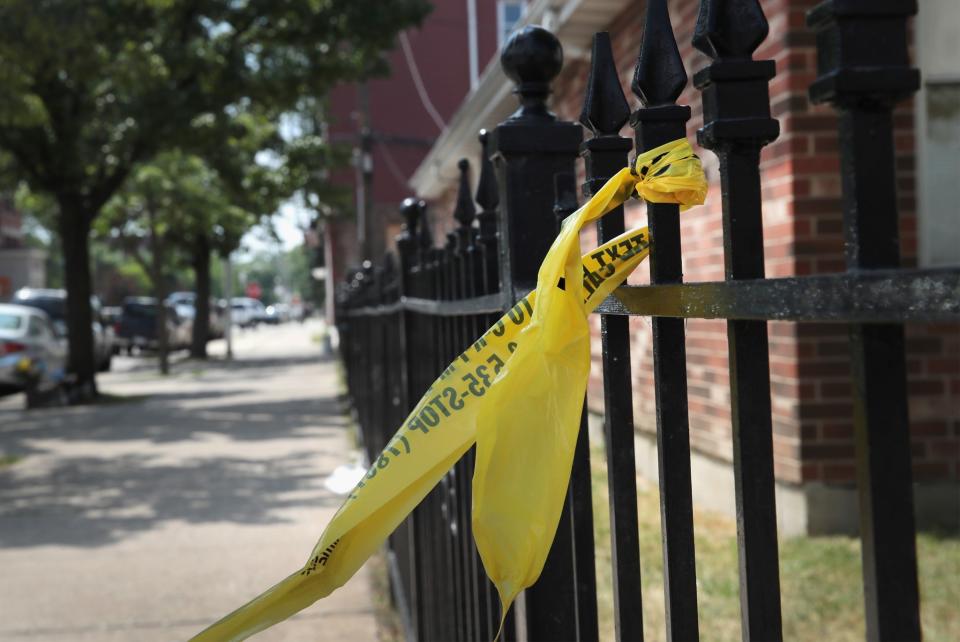
“Keep in mind, they’re already rivals,” said Alvarez. “So now you’re taunting them in public. They have to respond because if not, they look like they’re weak.”
Often, said Alvarez, the consequences are an afterthought.
“For them it’s like it’s a game,” he said. “A game [where] … people are losing their lives. People are getting hurt pretty bad.”
“There’s no rhyme or reason for the extreme violence that goes on here,” said Chico, exasperated. “I guess I’m just frustrated as hell with the lack of common sense that goes into this. There’s no explanation for it.”
Chico suggested that gangs are no longer intimidated by cops, who, he believes, have become more passive in the wake of high-profile police shootings like that of 17-year-old Laquan McDonald in 2015, for fear of getting sued or worse.
Data released by the Chicago Police Department in March 2016 showed that police stops were down 90 percent from the previous year, with the fallout from the McDonald shooting reportedly depleting officers’ morale as gun violence throughout the city continued to rise.
“Right now it seems like [cops] are afraid … of a lawsuit, riots — you know, what happened in the last couple years over here,” said Garcia, saying he’s observed far less of a police presence in the neighborhood than when he was young. “I mean, if they could catch somebody right away that hurt a policeman, why can’t they [get] somebody that hurt kids?”
Cmdr. Stephen Chung, who heads the Chicago police district that serves Back of the Yards, did not respond to multiple requests for comment.
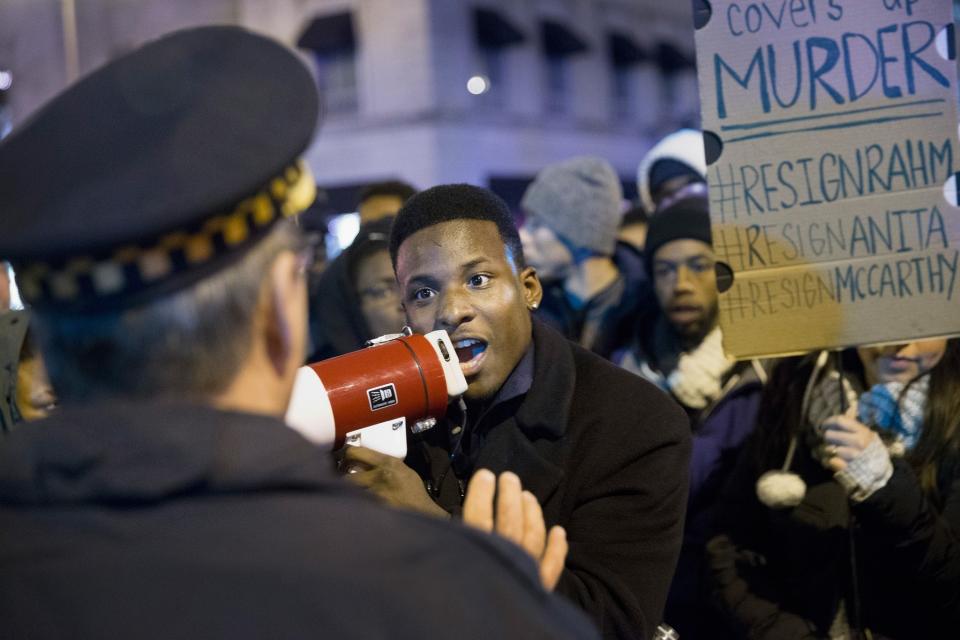
***
Back at St. Joseph’s, children in soccer jerseys began to fill the gym, many accompanied by parents but several by themselves. Outside, Alvarez asked a little boy in Spanish if his parents were going to come to the party.
“No,” he said. “Están ocupado.” They’re busy.
“Unfortunately, there’s no such thing as a perfect parent,” Alvarez said, adding that, for many families in the neighborhood, “both parents have to work … to make ends meet, because you gotta pay rent, you gotta pay bills.”
“Programs like this, they drop them off and they go, because now they finally get a chance to go do their errands, grocery shopping, do whatever they have to do. Which I don’t like, personally. That keeps the parents out of the kids’ lives,” he continued, and leaves room for gang members to offer the attention they crave.
Alvarez understands what it’s like for these kids: “My dad worked all his life. … All he did was work, work, work, work, that typical Mexican, you know, just get up, go to work, come home. But, thank God, I always had a roof over my head, I always had food on the table. Because that’s the mentality, just providing for the family.”
On the corner where he grew up, 19th and Hoyne in Pilsen, a little more than four miles directly north of Back of the Yards, Ramiro said, he “personally witnessed six homicides.”
“Thank God I lived on the second floor and it was a brick house,” he said.
He said his dad would take him to the park after working long hours at an anodizing company and fall asleep on a bench while Ramiro played — “but at least we’re at the park.”
“I started playing baseball and that actually kept me away from the gang,” he said.
“So I know how important it is for these kids to have something to do where they don’t have to be out with the gang — either they’re practicing or they’re playing.”
The Union Impact Center’s soccer program, which will begin its summer season next week, is just one of several community-based programs designed to deter the neighborhood’s youngest residents from getting sucked into the cycle of violence, including a number of activities organized by the Back of the Yards Neighborhood Council.
“The reality is there are still are still great families here; they’re immigrant families looking for an opportunity,” said Chico, arguing that though he believes “better resources will be the solution long-term … in the immediate, [we] need police to take action.”
Ultimately, though, “we’re responsible as much as anybody for being tolerant,” he said. “The community’s going to just have to rally around this to say, ‘Enough’s enough.’ ”
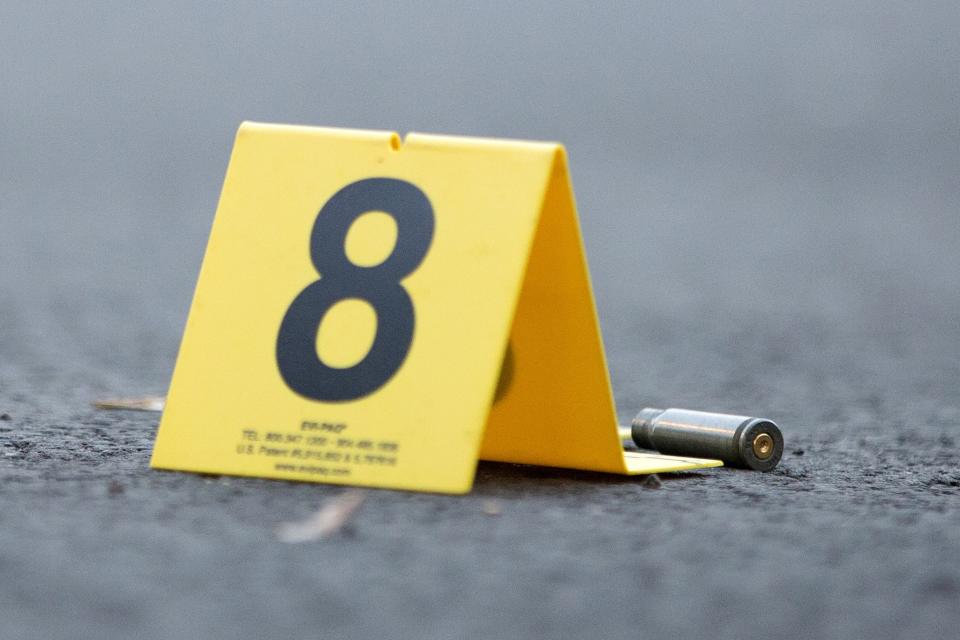
But Hagedorn said it’s not so simple. “You have now a half-century of killing between the two gangs,” he said. It’s “very difficult to just say, ‘Let’s forget about all this.’ ”
Of course, he continued, “anything is possible,” noting that all gangs have gone through periods of both war and peace. “But when blood is shed and your family has lost a brother, it’s difficult to stop the cycle of violence.”
Eighteen-year-old Angela Gomez, who grew up in Back of the Yards, has suddenly found herself confronted with that reality.
Earlier this month, her cousin Angel Gomez, also 18, was arrested following the shooting of the two plainclothes police officers days earlier. Members of La Raza had reportedly identified Gomez to police as the driver in the shooting. He was charged with two counts of aggravated assault with a firearm and two counts of attempted murder.
“I’m not sure if he actually did do the driving or not, but my family is saying that the gangbangers framed him for it, since he was an easy target,” she said, explaining that Gomez’s parents — her godparents — are not around very much. She said her uncle works long hours as a mechanic, having rejected her father’s attempts to get him a better job at the landscaping company where he works, for fear of having his immigration status exposed.
“I believe he was friends with gangbangers; I just actually don’t know if he was a part of the gang,” she said. “His sister and his brother are saying he was framed. … They’re saying he said he did it because his lawyers told him they’d let him off sooner and because he’s afraid if … his family’s afraid if he actually knows who did it, if it wasn’t him, they will go after us, you know, his family, because that’s what they do.”
Since her cousin’s arrest, Gomez said her family has been afraid to go to Back of the Yards because of concerns that they might get recognized by Saints and targeted for retaliation.
“My mom’s trying to keep the whole family away from here for now because she doesn’t want anybody recognizing us or anything because of our cousin,” she said.
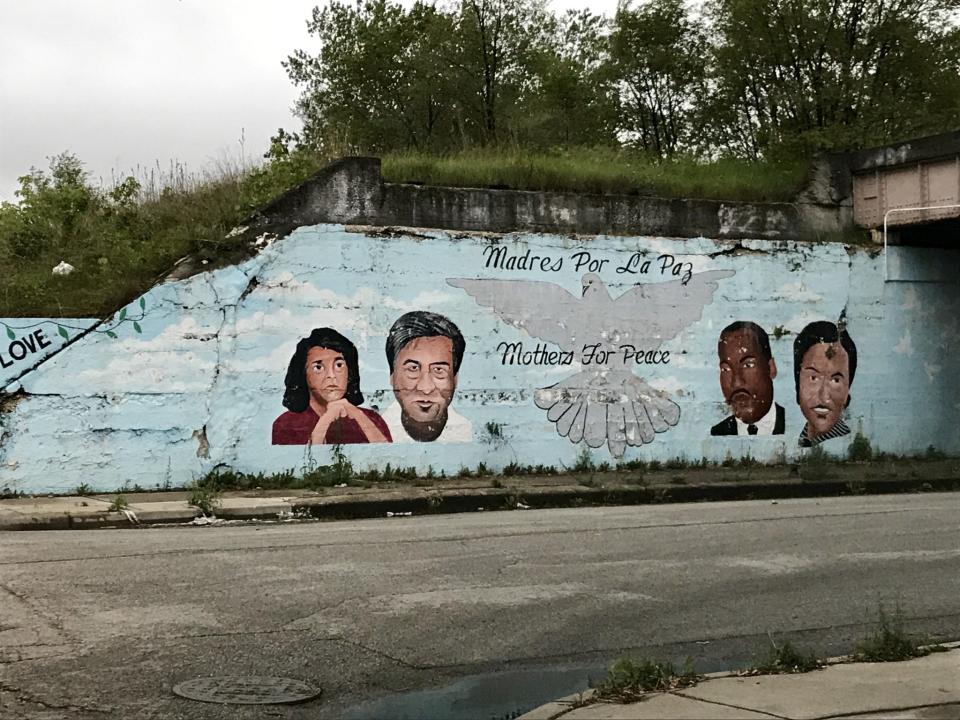
But Gomez said the threats aren’t necessarily confined to the neighborhood.
“I looked at a Facebook post about my cousin and people are saying that he should get killed along with his whole family. … Some people were saying that he should get arrested and his whole family should get deported,” she said.
“That’s why I think, is it really worth being scared to come over here [to Back of the Yards]? … Am I safe anywhere?”
_____
Read more from Yahoo News:



